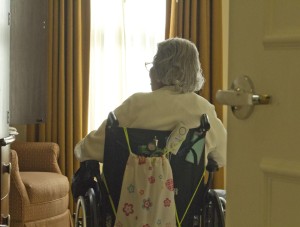 Across the country, state leaders are sounding the alarm about the growing influence of private equity in nursing homes and long term care. According to the Private Equity Stakeholder Project’s 2025 legislative tracker, this year marks a turning point in states’ efforts to scale back private equity’s footprint in the healthcare sector. From California to Massachusetts, lawmakers are beginning to recognize what families and advocates have been experiencing for years: when private equity buys nursing homes, patient care often suffers.
Across the country, state leaders are sounding the alarm about the growing influence of private equity in nursing homes and long term care. According to the Private Equity Stakeholder Project’s 2025 legislative tracker, this year marks a turning point in states’ efforts to scale back private equity’s footprint in the healthcare sector. From California to Massachusetts, lawmakers are beginning to recognize what families and advocates have been experiencing for years: when private equity buys nursing homes, patient care often suffers.
How Many Nursing Homes Are Owned by Private Equity
Researchers estimate that private equity firms now own roughly eleven percent of all nursing homes in the United States, representing more than one thousand five hundred facilities nationwide. Some studies place the number even higher when including complex ownership structures, management companies and affiliated real estate trusts used to mask true ownership.
This rapid expansion has been accompanied by a pattern that concerns regulators and advocates. Private equity’s model depends on short term profit extraction, typically over three to five years, which often leads to staffing cuts, increased resident to caregiver ratios, deferred maintenance and aggressive cost reducing strategies that directly affect resident safety.
How Private Equity Ownership Impacts Resident Care
Multiple peer reviewed studies, investigative reports and government analyses have found that private equity owned nursing homes often deliver measurably worse outcomes. According to a 2021 study published in JAMA Health Forum, mortality rates were ten percent higher in private equity owned facilities compared to non PE homes. A 2022 GAO analysis similarly found that private equity owned homes spent significantly less on frontline staffing.
The reasons are predictable. PE firms typically load nursing homes with debt, extract cash through management fees and sale leaseback arrangements and shift revenue to related parties. This leaves less money for nurses, aides, staff training and essential supplies. Facilities struggle to retain experienced caregivers, turnover increases, call lights go unanswered and vulnerable residents are left at greater risk of falls, pressure ulcers, infections and medication errors.
The recent bankruptcy of Genesis Healthcare, highlighted by the Private Equity Stakeholder Project, illustrates this pattern. Genesis had been stripped of assets through sale leaseback transactions and saddled with debt, leaving the company unable to sustain operations. “A case study in how financial engineering can undermine long term care delivery,” PESP warned.
States Begin Cracking Down
Recognizing the threat to patient safety, at least six states enacted new laws in 2025 aimed at curbing private equity’s influence. California, Indiana, Massachusetts, New Mexico, Maine and Oregon passed measures to increase ownership transparency, restrict risky financial practices and limit the ability of non clinicians to influence medical decision making.
Illinois and Pennsylvania advanced bills giving their attorneys general authority to block private equity deals that pose risks to public health. Even in states where bills failed this year, such as Colorado and Connecticut, bipartisan debate continues.
These laws focus on four major areas.
- Ownership transparency and reporting.
- State approval of acquisitions and management agreements.
- Restrictions on sale leasebacks, excessive debt layering and other extractive financial practices.
- Prohibiting management service organizations from influencing clinical decision making.
Together, these reforms represent a growing national movement toward accountability in long term care financing.
What This Means for Families
For families placing a loved one in a nursing home or assisted living facility, private equity ownership is a meaningful risk factor. Facilities under pressure to meet investor expectations often operate with minimal staffing, untrained workers and deteriorating conditions. The result is predictable: preventable injuries, neglect, emotional trauma and wrongful death.
Families rarely know their loved one’s facility is owned by private equity because ownership often hides behind multiple shell companies. This opacity is precisely why states and advocates are pushing for clearer reporting.
Nursing Home Law Group’s Role in Protecting California’s Seniors
For more than twenty five years, Nursing Home Law Group has represented abused and neglected residents in nursing homes and assisted living facilities across California. Our firm has seen firsthand how private equity ownership models place profits over people. We have handled cases involving chronic understaffing, pressure injuries, fatal infections, preventable falls, medication errors, elopement, chemical restraints and wrongful death all occurring in facilities operating under PE cost cutting structures.
Our mission is simple.
• Hold negligent facilities accountable.
• Expose dangerous ownership models.
• Protect seniors and their families.
• Demand full justice for the harm caused.
As private equity continues to expand in the long term care industry, legal advocacy has never been more critical. Until national standards are enacted, state reforms and civil litigation remain the strongest tools available to protect vulnerable residents.
Conclusion
The expansion of private equity into nursing home ownership represents one of the most significant threats to resident safety in decades. With more than one thousand five hundred facilities under private equity control, the consequences are already visible: declining care, higher mortality, unstable operations and communities left to shoulder the fallout. But with increased state oversight, public awareness and dedicated advocacy from firms like Nursing Home Law Group, the tide may finally be turning.
If you need help, or if you believe a loved one has been neglected or abused, Nursing Home Law Group is here to stand with you.
 Southern California Nursing Home Abuse Lawyer Blog
Southern California Nursing Home Abuse Lawyer Blog








